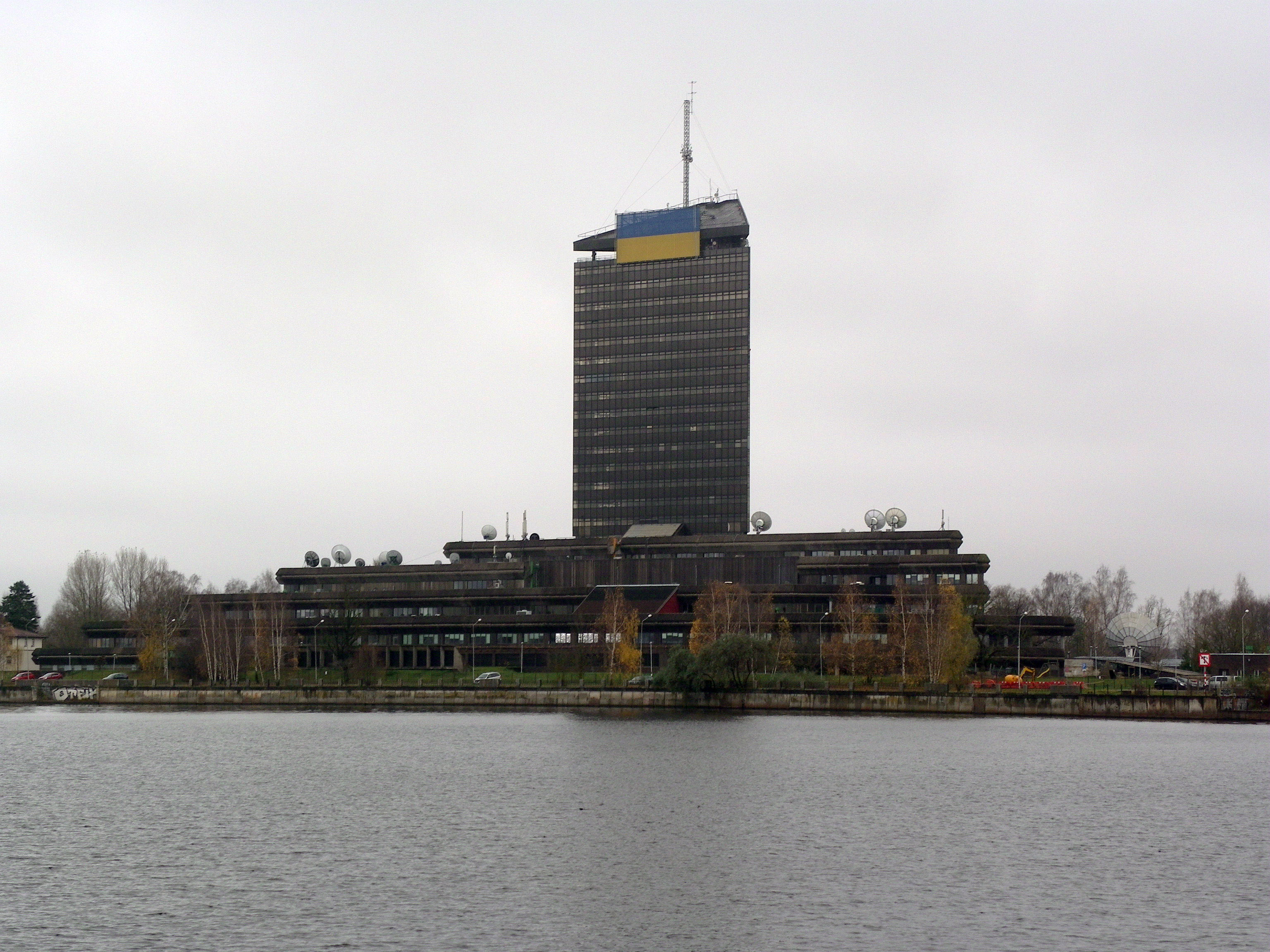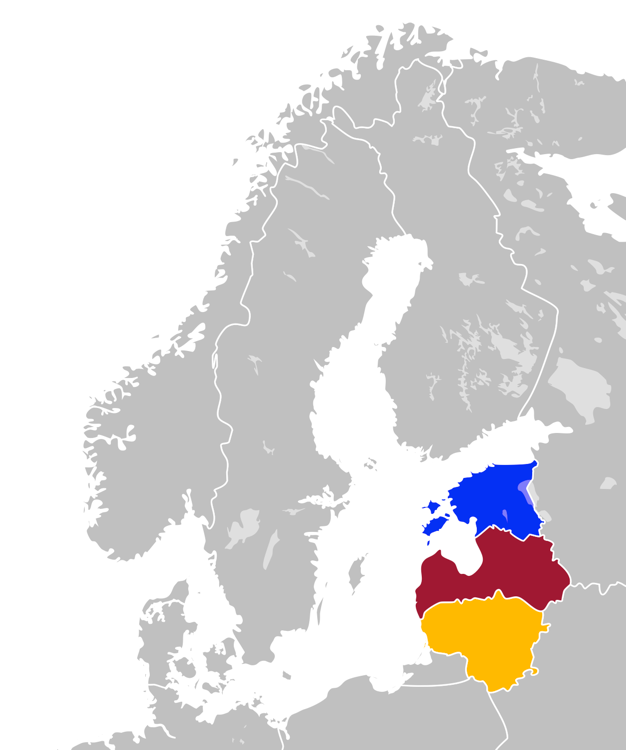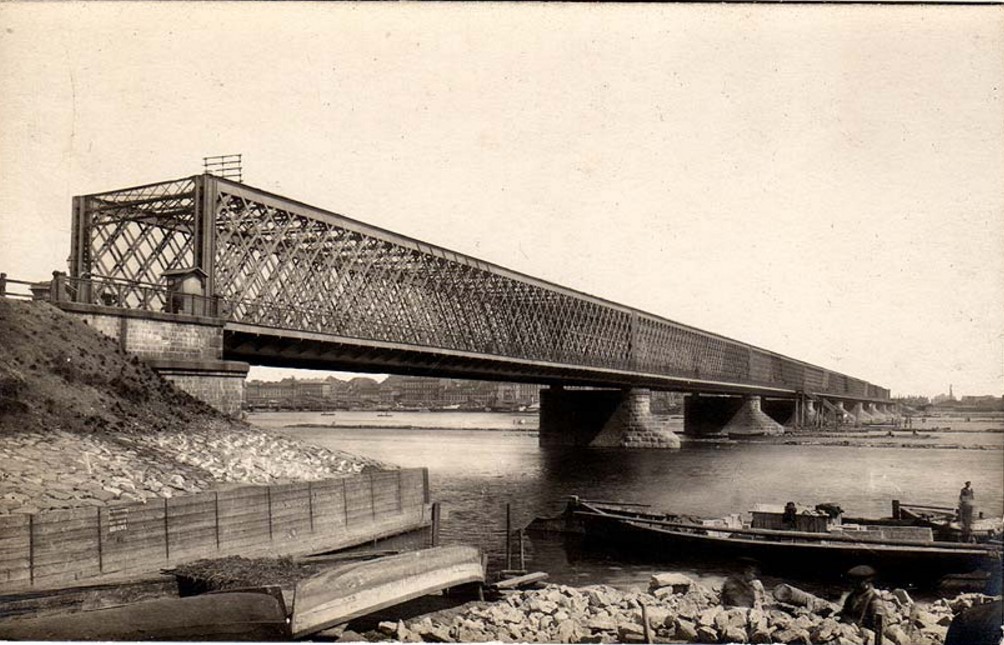|
Zaķusala
Zaķusala (Hare Island) is one of several islands in the Daugava River in the central part of Riga, the capital of Latvia. A part of the city's Salas neighbourhood, Zaķusala is home to the Riga Radio and TV Tower, which was completed in 1986 and the Latvian Television building, also completed the same year. The tower is the tallest structure in the Baltic states. On the northern tip of the island, alongside the railway trestles are remnants of the Iron Bridge that was blown up during the Second World War. In maps of the city of Riga in the start of the 20th century, the island is usually referred by the name "Hasenholm". This name is also used in the story of Amfian Gerasimov, a Righteous Among the Nations that saved a Jewish family that live on this island Gallery File:Latvijas Televīzijas ēka 06 2005.jpg, Latvian Television building File:Zaķusala fom Riga tower.jpg, View of the island from the TV Tower File:RigaZakusalasKrastmala(2).jpg, Along Zaķusalas krastmala (Za� ... [...More Info...] [...Related Items...] OR: [Wikipedia] [Google] [Baidu] |
Salas, Riga
Salas ('Islands' in Latvian) is a neighbourhood of Riga, the capital of Latvia. Its landmass consists entirely of the islands Zaķusala, Lucavsala, and Kazas sēklis ('Goat Sandbank'). It is the least populated neighbourhood of Riga with a population of just around 70-80 people. Gallery File:Zakjusalas ziemelju gals.jpg, Zaķusala, viewed from the northern end File:Zaķusala island, Riga - panoramio - alinco fan (2).jpg, Zaķusala, viewed from the Riga Radio and TV Tower File:Lucavsala (2).jpg, Lucavsala Recreation Park File:Lucavsalas piemineklis (4).jpg, Monument to Russian soldiers from the Great Northern War In the Great Northern War (1700–1721) a coalition led by the Tsardom of Russia successfully contested the supremacy of the Swedish Empire in Northern Europe, Northern, Central Europe, Central and Eastern Europe. The initial leaders of the ant ... in Lucavsala File:Kazas seeklis.jpg, View of Kazas sēklis Neighbourhoods in Riga {{Riga-stub ... [...More Info...] [...Related Items...] OR: [Wikipedia] [Google] [Baidu] |
Latvijas Televīzija
Latvijas Televīzija (''Latvian Television'', LTV) is the state-owned public service broadcasting, public service television broadcaster in Latvia. LTV operates two channels, LTV1 in Latvian language, Latvian and LTV7 (previously called LTV2) in Latvian with selected programming in Russian language, Russian. The broadcaster has been fully funded by the state budget since 1 January 2021, when, after years of debate, it and radio broadcaster Latvijas Radio exited the Television advertisement, advertising market. LTV is a member of the European Broadcasting Union, having joined on 1 January 1993. From the restoration of independence in 1991 to 31 December 1992, it was a member of the International Radio and Television Organisation (OIRT). LTV hosted the annual Eurovision Song Contest 2003, Eurovision Song Contest in 2003, as well as the 2006 IIHF World Championship, IIHF Men's Ice Hockey Championships in 2006 and 2021, and the inaugural Eurovision Choir of the Year competition in E ... [...More Info...] [...Related Items...] OR: [Wikipedia] [Google] [Baidu] |
Riga Radio And TV Tower
The Riga Radio and TV Tower () in Riga, Latvia is the tallest tower in the European Union. It was built between 1979 and 1989 with funding from the central government of the Soviet Union. Its highest point reaches , which makes it the third tallest tower in Europe (after the Ostankino Tower at and the Kyiv TV Tower at ) and the 15th tallest self-supporting tower in the world. Features There was a restaurant, "Vēja roze" ("Wind Rose"), at the level, which was open since the completion of the tower until 2006. There is a public observation platform just above it at , from which most of the city and surroundings and the Gulf of Riga can be seen. Renovation Since May 2019, the tower has closed to visitors for about five years for the renovation and expansion of the visitors' area and the adjacent territory under the "TV Tower 2.0" project. It is planned to re-open in 2024 when there will again be a restaurant and the tower's bomb shelter will open to the public. A Foucault pendu ... [...More Info...] [...Related Items...] OR: [Wikipedia] [Google] [Baidu] |
Riga
Riga ( ) is the capital, Primate city, primate, and List of cities and towns in Latvia, largest city of Latvia. Home to 591,882 inhabitants (as of 2025), the city accounts for a third of Latvia's total population. The population of Riga Planning Region, Riga metropolitan area, which stretches beyond the city limits, is estimated at 847,162 (as of 2025). The city lies on the Gulf of Riga at the mouth of the Daugava (river), Daugava river where it meets the Baltic Sea. Riga's territory covers and lies above sea level on a flat and sandy plain. Riga was founded in 1201, and is a former Hanseatic League member. Riga's historical centre is a UNESCO World Heritage Site, noted for its Art Nouveau/Jugendstil architecture and 19th century wooden architecture. Riga was the European Capital of Culture in 2014, along with Umeå in Sweden. Riga hosted the 2006 Riga summit, 2006 NATO Summit, the Eurovision Song Contest 2003, the 2013 World Women's Curling Championship, and the 2006 IIHF Wo ... [...More Info...] [...Related Items...] OR: [Wikipedia] [Google] [Baidu] |
Hare
Hares and jackrabbits are mammals belonging to the genus ''Lepus''. They are herbivores and live Solitary animal, solitarily or in pairs. They nest in slight depressions called forms, and their young are precociality, able to fend for themselves shortly after birth. The genus includes the largest Lagomorpha, lagomorphs. Most are fast runners with long, powerful hind legs, and large ears that dissipate body heat. Hare species are native to Africa, Eurasia and North America. A hare less than one year old is called a "leveret". Members of the ''Lepus'' genus are considered true hares, distinguishing them from rabbits which make up the rest of the Leporidae family. However, there are five leporid species with "hare" in their common names which are not considered true hares: the hispid hare (''Caprolagus hispidus''), and four species known as red rock hares (''Pronolagus''). Conversely, several ''Lepus'' species are called "jackrabbits", but classed as hares rather than rabbits. The p ... [...More Info...] [...Related Items...] OR: [Wikipedia] [Google] [Baidu] |
Daugava River
The Daugava ( ), also known as the Western Dvina or the Väina River, is a large river rising in the Valdai Hills of Russia that flows through Belarus and Latvia into the Gulf of Riga of the Baltic Sea. The Daugava rises close to the source of the Volga. It is in length, of which are in Latvia and in Russia. It is a westward-flowing river, tracing out a great south-bending curve as it passes through northern Belarus. The city of Ķekava is located 6 miles south of the west bank of the river. Latvia's capital, Riga, bridges the river's estuary four times. Built on both riverbanks, the city centre is from the river's mouth and is a significant port. Etymology According to Max Vasmer's ''Etymological Dictionary'', the toponym Dvina cannot stem from a Uralic language; instead, it possibly comes from an Indo-European word which used to mean 'river' or 'stream'. The name ''Dvina'' strongly resembles '' Danuvius'' which is itself derived from the Proto-Indo-European ''*dānu' ... [...More Info...] [...Related Items...] OR: [Wikipedia] [Google] [Baidu] |
Latvia
Latvia, officially the Republic of Latvia, is a country in the Baltic region of Northern Europe. It is one of the three Baltic states, along with Estonia to the north and Lithuania to the south. It borders Russia to the east and Belarus to the southeast, and shares a Maritime boundary, maritime border with Sweden to the west. Latvia covers an area of , with a population of 1.9million. The country has a Temperate climate, temperate seasonal climate. Its capital and List of cities and towns in Latvia, largest city is Riga. Latvians, who are the titular nation and comprise 65.5% of the country's population, belong to the ethnolinguistic group of the Balts and speak Latvian language, Latvian. Russians in Latvia, Russians are the most prominent minority in the country, at almost a quarter of the population; 37.7% of the population speak Russian language, Russian as their native tongue. After centuries of State of the Teutonic Order, Teutonic, Swedish Livonia, Swedish, Inflanty Voi ... [...More Info...] [...Related Items...] OR: [Wikipedia] [Google] [Baidu] |
GeoNames
GeoNames (or GeoNames.org) is a user-editable geographical database available and accessible through various web services, under a Creative Commons attribution license. The project was founded in late 2005. The GeoNames dataset differs from, but includes data from, the US Government's similarly named GEOnet Names Server. Database and web services The GeoNames database contains over 25,000,000 geographical names corresponding to over 11,800,000 unique features. All features are categorized into one of nine feature classes and further subcategorized into one of 645 feature codes. Beyond names of places in various languages, data stored include latitude, longitude, elevation, population, administrative subdivision and postal codes. All coordinates use the World Geodetic System 1984 ( WGS84). Those data are accessible free of charge through a number of Web services and a daily database export. Wiki interface The core of the GeoNames database is derived from official public so ... [...More Info...] [...Related Items...] OR: [Wikipedia] [Google] [Baidu] |
Baltic States
The Baltic states or the Baltic countries is a geopolitical term encompassing Estonia, Latvia, and Lithuania. All three countries are members of NATO, the European Union, the Eurozone, and the OECD. The three sovereign states on the eastern coast of the Baltic Sea are sometimes referred to as the "Baltic nations", less often and in historical circumstances also as the "Baltic republics", the "Baltic lands", or simply the Baltics. The term "Balticum" is sometimes used to describe the region comprising the three states; see e.g All three Baltic countries are classified as World Bank high-income economy, high-income economies by the World Bank and maintain a very high Human Development Index. The three governments engage in intergovernmental and parliamentary cooperation. There is also frequent cooperation in foreign and security policy, defence, energy, and transportation. Etymology The term ''Baltic'' stems from the name of the Baltic Sea – a hydronym dating back to at least ... [...More Info...] [...Related Items...] OR: [Wikipedia] [Google] [Baidu] |
Iron Bridge, Riga
The Iron Bridge () or Semigallia Bridge (''Zemgales tilts'') was a bridge that crossed the Daugava River, Daugava river in Riga, the capital of Latvia. It was built in 1871–72. The bridge was bombarded twice, during World War I and World War II, and was not rebuilt after the last war. The only remains of the bridge are its pillars in the river. References Bridges in Latvia Bridges completed in 1872 {{Latvia-bridge-struct-stub ... [...More Info...] [...Related Items...] OR: [Wikipedia] [Google] [Baidu] |
Second World War
World War II or the Second World War (1 September 1939 – 2 September 1945) was a World war, global conflict between two coalitions: the Allies of World War II, Allies and the Axis powers. World War II by country, Nearly all of the world's countries participated, with many nations mobilising all resources in pursuit of total war. Tanks in World War II, Tanks and Air warfare of World War II, aircraft played major roles, enabling the strategic bombing of cities and delivery of the Atomic bombings of Hiroshima and Nagasaki, first and only nuclear weapons ever used in war. World War II is the List of wars by death toll, deadliest conflict in history, causing World War II casualties, the death of 70 to 85 million people, more than half of whom were civilians. Millions died in genocides, including the Holocaust, and by massacres, starvation, and disease. After the Allied victory, Allied-occupied Germany, Germany, Allied-occupied Austria, Austria, Occupation of Japan, Japan, a ... [...More Info...] [...Related Items...] OR: [Wikipedia] [Google] [Baidu] |








